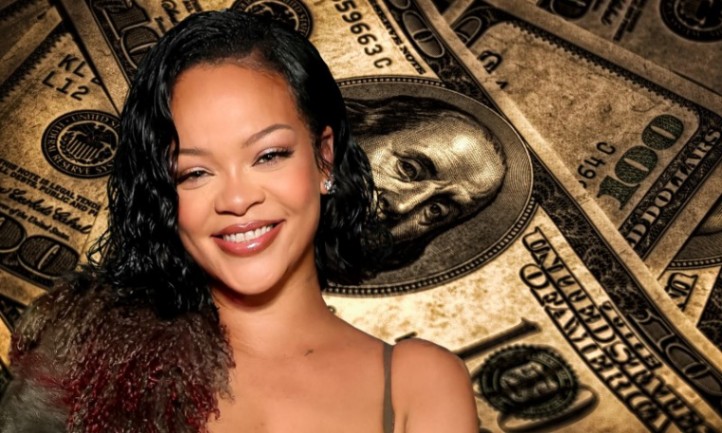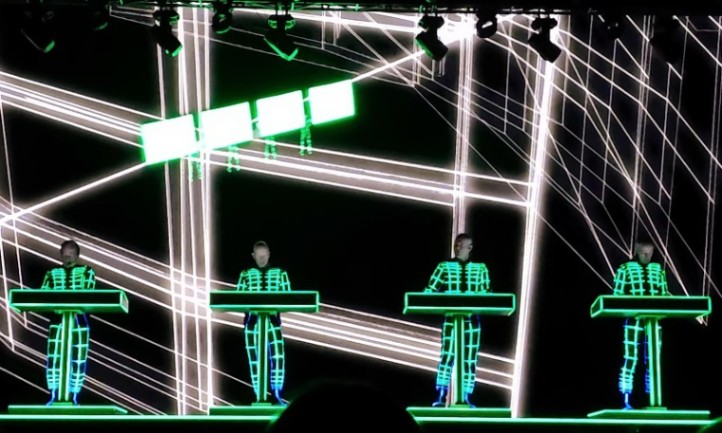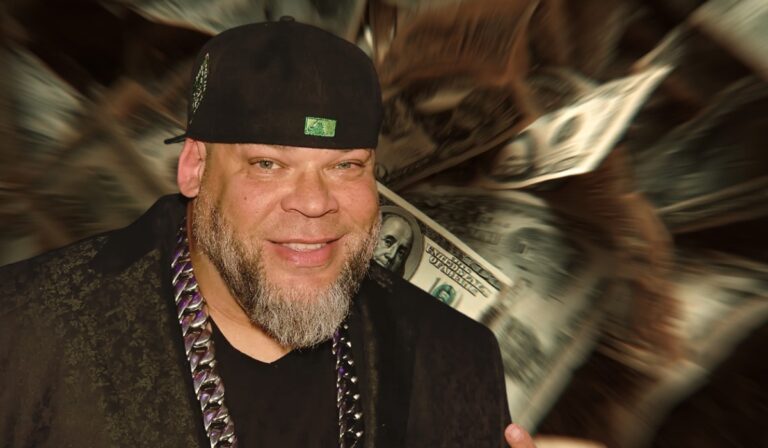Tony Hinchcliffe built his career through sharp wit, fearless delivery, and a knack for stirring both laughter and outrage.
Rising from open mics to major tours, he transformed raw ambition into an empire that thrives on both talent and tension.
His estimated net worth in 2025 sits between $6 million, a sum earned through stand-up, podcasting, and relentless self-promotion.
Comedy paid his bills, but controversy kept his name in headlines, and that mix has turned him into one of the most talked-about figures in comedy today.
How Much is Tony Hinchcliffe Worth?
Tony Hinchcliffe’s estimated net worth ranges between $6 million, fueled by multiple income streams that extend far past traditional stand-up performances.
Years of persistence in the comedy circuit, paired with a fearless public image, have allowed him to profit both onstage and online.
- Kill Tony generates a steady income through sponsorships, ticketed events, and YouTube monetization.
- Nationwide tours bring in approximately $50,000 to $150,000 per show.
- Multi-project contracts with Netflix are reportedly worth several million dollars.
- Branded apparel, collectibles, and online store products.
- Early career roast writing and continued involvement in media projects.
Relocation to Austin, Texas, also played a key role in expanding his net worth. Lower taxes, sold-out live events at Joe Rogan’s Comedy Mothership, and a fan base that thrives on his authenticity helped him build financial stability.
From Comedy Store Doorman to Roast Master
Working at The Comedy Store became his unofficial college. By answering phones and checking IDs, Tony found himself surrounded by the legends of stand-up.
Observing greats like Richard Pryor, George Carlin, and Joe Rogan gave him a front-row education in rhythm, confidence, and audience control. Between shifts, he hustled for stage time, performing at open mics long after midnight to rooms of a dozen people.
Those late nights turned into an apprenticeship in comedy. His sharp insults and dry humor soon earned attention from peers.
Jeff Ross, often called the “Roastmaster General,” became a mentor and helped Tony break into professional roasting.
Writing for Comedy Central’s high-profile roasts of Justin Bieber, James Franco, and Rob Lowe made him a sought-after comedic writer. Each assignment came with impressive pay and professional credibility.

- Comedy Central Roast fees: $10,000–$25,000 per event
- Additional income: Residuals and royalties for televised content
- Early exposure: Collaborations with Jeff Ross, Joe Rogan, and fellow comedians
- Venue: The Comedy Store served as both workplace and classroom
Interesting Rumour: Donald Trump was, allegedly, paid $1 million for a Comedy Central roast.
The “Kill Tony” Podcast Empire
In 2013, Tony partnered with Brian Redban to launch Kill Tony, a bold hybrid of live stand-up and unscripted critique.
Each episode featured amateur comedians performing 60-second sets before facing Tony’s biting, often hilarious feedback. The concept broke traditional comedy rules and rewarded quick thinking over polish.
As the format matured, it attracted both fans and aspiring comics worldwide. What started as a small show in a comedy club became a media powerhouse with millions of listeners and consistent revenue. Tony’s ruthless but entertaining tone made Kill Tony impossible to ignore.
- Sponsorships: Deals with comedy brands, energy drinks, and media platforms
- Live shows: Sold-out events across major U.S. cities
- YouTube revenue: Monetized clips reaching millions of views
- Merchandise: Clothing, posters, and collectibles tied to the show’s brand
Kill Tony became a proving ground for aspiring comics and a global entertainment franchise. For Tony, it solidified his identity as both creator and kingmaker in modern comedy.
Netflix Specials, Tours & Big Breaks
Tony’s first major streaming breakthrough arrived in 2016 with One Shot, a Netflix special filmed in a single take without edits, a testament to his precision and confidence on stage.
The project elevated his visibility and validated his technical control over live performance.
Momentum continued in 2017 with the Monster Energy Outbreak Tour, taking him to over 20 cities across the United States.
Earnings per show were reported between $50,000 and $150,000, establishing him as a touring powerhouse capable of drawing large crowds.
By 2025, Tony secured a multi-show Netflix deal that included new Kill Tony adaptations and personal stand-up specials. Industry reports indicate the contract’s value reached several million dollars, placing him among comedy’s high earners.
Controversy and Cancellation
WWE today announced that WWE Late Night Featuring @TonyHinchcliffe will take place at the Bergen Performing Arts Center in Englewood, New Jersey, on Saturday, August 2 at 11pm ET, as a part of #SummerSlam weekend! 🎤🔥
MORE INFO: https://t.co/kMu19AlLAa pic.twitter.com/geUFPZEOHZ
— WWE (@WWE) June 27, 2025
Tony Hinchcliffe built a career on walking the fine line between funny and offensive. In 2021, his career faced turbulence after jokes about Asians went viral, prompting his removal from major talent agencies and exclusion from Joe Rogan’s tour lineup.
He dismissed the uproar as “an orchestrated attack by Chinese media,” refusing to apologize.
In 2024, his remarks at a Trump rally reignited outrage. Calling Puerto Rico a “floating island of garbage” and making racially charged comments about Latinos triggered immediate backlash.
Public figures like AOC, Tim Walz, Ricky Martin, and Bad Bunny condemned his words, and even the Trump campaign distanced itself.
Public reaction became divided, yet his core fan base only grew stronger. Many viewed him as a symbol of free speech in a culture of outrage. His defiance became part of his identity.
- 2021 incident: Asian stereotype jokes leading to dropped partnerships
- 2024 controversy: Racial remarks about Puerto Rico and Latino audiences
- Public backlash: Condemnation by high-profile figures
- Response: Refusal to apologize, labeling critics humorless
The Rogan-Austin Pivot & Reinvention
After losing Hollywood connections, Tony relocated to Austin, Texas, aligning himself with Joe Rogan’s new Comedy Mothership venue. The city offered freedom and a thriving stand-up scene without the restrictions of major industry oversight.
Kill Tony transitioned seamlessly to live shows at the Mothership, selling out within minutes of ticket release.
Freed from mainstream expectations, he built a new empire grounded in authenticity and loyal support. Austin became his creative stronghold, where he could experiment without fear of corporate interference.
His ability to adapt and capitalize on controversy turned what could have been career-ending moments into new beginnings.
- Relocation: Moved to Austin, Texas, to join Joe Rogan’s comedy network
- Venue: Kill Tony hosted at the Comedy Mothership
- Business shift: Focus on live events, digital presence, and fan-driven income
- Cultural impact: Established a model for independent success in comedy
@comedycurated Tony Hinchcliffe During Election😂😂😂 Comedians : Joe Rogan & Theovon Podcast : JRE #tonyhinchcliffe #joerogan #comedypodcast #funny #joeroganpodcast #theovon #puertorico #hilarious ♬ original sound – ComedyCurated
Early Life & Humble Beginnings
Tony Hinchcliffe entered the world on June 8, 1984, in Youngstown, Ohio, a city known for its rough neighborhoods and working-class grit.
Raised by a single mother, he grew up surrounded by financial struggle and social tension, shaping his comedic instincts early on.
Humor became his way of survival, helping him defuse threats and gain acceptance in an environment where quick wit often meant safety. Schoolyard fights, teasing, and confrontation molded his verbal sharpness long before he ever touched a stage.
A major turning point came when he decided to leave Ohio behind and chase a dream in Los Angeles in 2007. He arrived with no money, no network, and no plan other than to perform.
His days were spent juggling side jobs and open mics, his nights writing jokes and studying other comics.
Every rejection only hardened his resolve; every small laugh felt like progress. That early struggle became his foundation, instilling discipline and drive.
Summary
Tony Hinchcliffe represents comedy’s new business model: one built on talent, defiance, and digital reach.
His career shows that controversy, when managed strategically, can sustain fame and fortune. He may not be a network favorite, but his financial and creative success remains undeniable.
His story is both a warning and a roadmap for modern comedians: boldness can burn bridges, but it can also light the path to millions.
Read more: What celebrities have a gambling problem? Look at this list of times music celebrities were caught at the casino!












